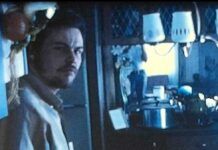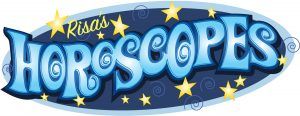In the early 1940s the United States fought two world wars where some 400,000 veterans lost their lives. The draft left women filling men’s shoes at home, but after Dec. 7, 1941, Congress passed a bill stating that women could serve in the United States military.
This chance to enlist freed servicemen from non-combat duties to fight, and women traded their skirts in for oversized male uniforms.
Last week, the Ladies Auxiliary of the Military Order of the Purple Heart hosted a tea party and Victorian-style fashion show to honor female veterans at the Veteran’s Home of California in Chula Vista.
The event was a tribute to their service during WWII and a reminder that they are acknowledged as heroes.
The center opened in 2000 and is home to more than 40 female veterans.
Around 70 percent of women who enlisted during WWII held traditional military jobs such as typists, clerks and mail sorters.
Joan de Munbrun and Dorothea Shultz were not among them.
De Munbrun and Shultz are two veterans who live at the center and also served during WWII.
“The war was very intensive – the entire country was involved,” De Munbrun said. “There was never such a thing as anti-war.”
De Munbrun, 97, was one of the first females to enlist in the Women’s Army Auxiliary Corps (WAAC) in 1942 at age 28.
She was sent to basic training at Fort Des Moines, Iowa, and was among the first 125 women assigned to field duties.
De Munbrun owned a beauty shop, which she abruptly closed in order to enlist. De Munbrun said that while her patrons lost more and more men, she felt compelled to join the effort.
“No matter what you went through, you just went through it,” she said. “We were the support group for the men. It was a very normalizing thing to have women on the field.”
Shultz, 89, was one of at least 200 women who served in the Women Airforce Service Pilots. Shultz, enlisted in the military in 1942 at age 21 with every intent to fly. “I had dreams when I was a little girl of a plane crashing and I would take over the wheel,” she said.
Shultz flew 12 different planes and towed targets during WWII. “It was a dream come true,” she said. The last time Shultz recalls flying was about 15 years ago. “It was a hard thing to give up,” she said. “But I can’t fly anymore.”
More than 25,000 women applied to train for WASP and of those less than 2,000 received training; 916 were serving when the program was disbanded in 1944.
Around 38 WASPs were killed in service during WWII and were not given veteran status in 1977.
Shultz taught for nearly 20 years at San Diego city schools in speech therapy.
De Munbrun was assigned to an advanced single-engine AT-6 flying school in an Eagle Pass Army base in Texas, where she worked as a photographer and lab technician. In 1943 she became the only WAAC staff instructor for the operation and maintenance of aerial cameras.
After WAAC disbanded in 1943, De Munbrun was sworn into the newly established Women’s Army Corps and attached to the Army Air Corps before being discharged Thanksgiving Day in 1945.
De Munbrun used the GI Bill to study photography for two years at the Fred Archer School of Photography in Los Angeles.
In 2001, De Munbrun became the first female at the veteran’s center and started the photography club in 2006.
Christine Hulsizer has been the executive secretary for the Veterans Home of California-Chula Vista for nearly four years. “You can gain a lot of strength from these women -they are fierce,” she said. “They have paved the road for others today and opened doors,” Hulsizer said.
De Munbrun embraced the military as her family.
“There was something about the people who went into the field that I have the greatest respect for,” she said. “You have no idea what people have gone through.”
“It says something about their character that they would go against the norm in the culture and serve,” said Joyce Simeroth, supervising rehab therapist at the center.
“Working here has helped me appreciate what veterans do,” she said. “They are walking history and it’s an honor to be able to serve them.”
De Munbrun has macular degeneration, a major cause of visual impairment in adults 50 years and older.
But that doesn’t stop her from continuing her passion of photography. With 70 years of photographic experience, De Munbrun still finds joy in teaching others. “All I teach is seeing,” she said. “What you see and how you see it.”
“Working here has opened my eyes and made me much more patriotic than I’ve ever been,” Hulsizer said. “These are living legends,” Hulsizer said.
De Munbrun founded the legion’s Charles W. Turner Post 867 in 2001 at the center and has been an active member of the American Legion since 1947.
The Ladies Auxiliary of the Military Order of the Purple Heart consists of mothers, wives, sisters, widows, daughters, stepdaughters, granddaughters and legally adopted female lineal descendants of Purple Heart recipients, chartered by Congress.















